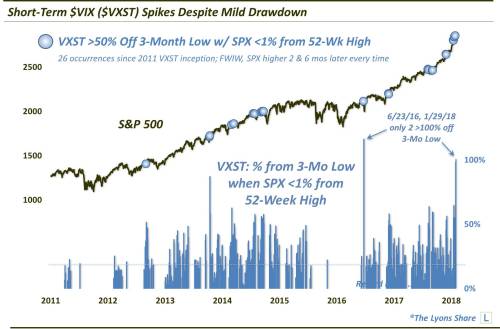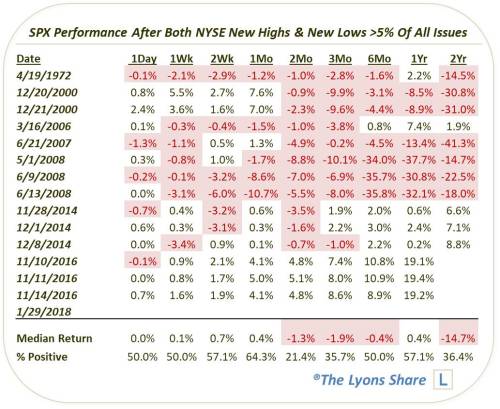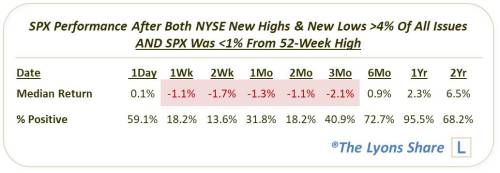When two days ago we previewed Yellen’s “swan song” FOMC meeting, which concludes at 2pm ET today, and launches Janet Yellen’s retirement, we observed that according to most sellside analysts, she is expected to send a distinctly more hawkish signal than in December, “by observing a more upbeat economic assessment and higher inflation measures”, an outcome which could send short-dated yields spiking, lead to further curve flattening, and as for what it does to the beaten down dollar is anyone’s guess, especially if a determined hawkish bias by the Fed is seen as an accelerant to the next US recession.
Or maybe not. According to Citi’s former chief FX strategist Steven Englander, currently at Rafiki Capital, the Fed does not see a particular reason to send any message today, “when there is ambiguity over whether it is a Yellen or Powell Statement, and without a press conference to explain the context of the changes.”
So I lean to the minimum needed to reflect improved economic conditions and firming of inflation expectations.
Given how rates have moved in recent weeks, Englander believes that this may come across as slightly dovish, which would be a change to the prevailing market sentiment, which as described previously is leaning hawkish and may explain the selloff over the past two days.
Meanwhile, as we discussed on Monday, market expectations are for upgrades on the language in activity and inflation, unwinding the Hurricane references and removing some of the language that could be viewed as referencing downside risk. This is more hawkish than the previous statement, but 2Yr yields have moved 30bps since after the December FOMC, so that kind of updating is already priced in, if perhaps not by equities. Also worth noting: while the market expects no action today, the March FOMC is about 85% priced in so according to Englander, “there is no pressing need to adjust market expectations in a hawkish direction.”
* * *
What should traders keep an eye on to determine if the Fed is turning hawkish… or not? According to Englander, the key issue will be how they characterize inflation and inflation expectations. The paragraph 1 text from the December Statement:
“On a 12-month basis, both overall inflation and inflation for items other than food and energy have declined this year and are running below 2 percent. Market-based measures of inflation compensation remain low; survey-based measures of longer-term inflation expectations are little changed, on balance.”
The key is whether they say something like:
” inflation and inflation expectations have bounced a back a bit, but remain below 2 percent on a 12-month basis”
or whether they say something like:
“Readings on inflation and inflation expectations have rebounded towards the target although on a 12-month basis they remain below 2 percent.”
The distinction is whether you make a point of saying inflation remains below target or whether there is an implication that the targets are being approached. Their problem is whether to look at 6-month annualized core PCE deflator growth (blue) which has rebounded smartly and is just over 1.7% annualized, or the 12 month (red) which shows a more shallow increase.

Englander here thinks they are worried about the blue line but see the March meeting as the better opportunity to discuss any changes to the speed with which they forecast an approach to 2%. In addition they still have to thrash out whether they want to aim for 2% or feel that a temporary overshoot is preferable.
The macro strategist’s bottom line: “they do the minimum and the minimum is slightly dovish given current market pricing.”
* * *
Meanwhile, for those readers who disagree, and think Yellen will take the opportunity to take the hawkish exit in her final meeting, here is what Goldman believes the Fed’s statement will look like, redlined to December:
Expected Changes to January FOMC Statement
Information received since the Federal Open Market Committee met in November December indicates that the labor market has continued to strengthen and that economic activity has been rising at a solid rate. Averaging through hurricane-related fluctuations, job Job gains have been solid, and the unemployment rate declined further remained low. Household spending has been expanding at a moderate rate strengthened, and growth in business fixed investment has picked up in recent quarters. On a 12-month basis, both overall inflation and inflation for items other than food and energy have declined this year and are running below 2 percent. Market-based measures of inflation compensation have risen recently but remain somewhat low; survey-based measures of longer-term inflation expectations are little changed, on balance.
Consistent with its statutory mandate, the Committee seeks to foster maximum employment and price stability. Hurricane-related disruptions and rebuilding have affected economic activity, employment, and inflation in recent months but have not materially altered the outlook for the national economy. Consequently, the Committee continues to expect that, with gradual adjustments in the stance of monetary policy, economic activity will expand at a moderate pace and labor market conditions will remain strong. Inflation on a 12‑month basis is expected to remain somewhat below 2 percent in the near term but to stabilize around the Committee’s 2 percent objective over the medium term. Near-term risks to the economic outlook appear roughly balanced, but the Committee is monitoring inflation developments closely.
In view of realized and expected labor market conditions and inflation, the Committee decided to raise maintain the target range for the federal funds rate to at 1-1/4 to 1‑1/2 percent. The stance of monetary policy remains accommodative, thereby supporting strong labor market conditions and a sustained return to 2 percent inflation.
In determining the timing and size of future adjustments to the target range for the federal funds rate, the Committee will assess realized and expected economic conditions relative to its objectives of maximum employment and 2 percent inflation. This assessment will take into account a wide range of information, including measures of labor market conditions, indicators of inflation pressures and inflation expectations, and readings on financial and international developments. The Committee will carefully monitor actual and expected inflation developments relative to its symmetric inflation goal. The Committee expects that economic conditions will evolve in a manner that will warrant gradual increases in the federal funds rate; the federal funds rate is likely to remain, for some time, below levels that are expected to prevail in the longer run. However, the actual path of the federal funds rate will depend on the economic outlook as informed by incoming data.
Voting for the FOMC monetary policy action were Janet L. Yellen, Chair; William C. Dudley, Vice Chairman; Thomas I. Barkin; Raphael W. Bostic; Lael Brainard; Patrick Harker; Robert S. Kaplan; Loretta J. Mester; Jerome H. Powell; and Randal K. Quarles; and John C. Williams. Voting against the action were Charles L. Evans and Neel Kashkari, who preferred at this meeting to maintain the existing target range for the federal funds rate.

via RSS http://ift.tt/2BHxaLA Tyler Durden
















